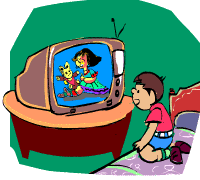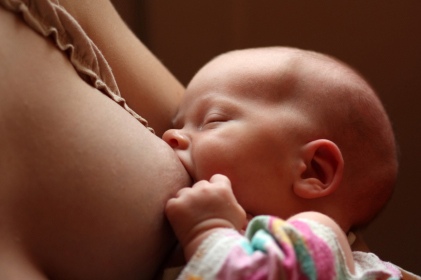The fact that television has an edge over other media because of its multisensorial appeal and the fact of its ubiquitous existence is what has made researchers probe its almost mesmeric hold on people across the world – especially pre-teen children, considering their impressionable developmental stage.
The hearth and the kitchen, traditionally the core of the house and the home, have been usurped by the flat screen in the drawing, bed or family room. It gives out such strong messages regarding lifestyle, personality and behavioural patterns, especially to impressionable minds.

Mesmerised by the Tube [Illustration by Shiju George]
The 1000 children came from varying difficult circumstances; they were children with a disability, in slums, on the streets and children in special circumstances belonging to single parent families, or commercial sex workers or from families with alcohol abuse.
The main purpose of the survey was to understand children’s relationship to the media, especially television.
How many watch and for how long?
Research revealed that 78 per cent of the children surveyed have a consistently regular access to television. In most cases, it was found to result in unregulated viewing by children.
- Over 38 per cent of the children have a regular access to the television meaning they watch television for three hours or more on a regular basis.
- Another 40 per cent have what they term as unrestricted access where they are often able to exercise their choice in viewing.
- Overall availability of cable television among the respondents is in the ratio of four to five.
- Access to cable television was found to be much higher than the stated availability. Instances of children from non-cable homes watching cable television with their friends may be another indicator.
- Access to cable television shows an increase with the age. It may be an indication of how with age children may be seeking increasingly diverse media.
- It was interesting to know that only 10 per cent of the children surveyed said they seldom watch television, meaning watching television often is not a priority.Television for these children works as a stimulant working as a medium of escape from harsh realities of their surrounding.
Who do they watch television with?
- This category includes both peer viewing as well as viewing with parents. The peer for children consists of both siblings and friends.
- Most children cited ‘sense of togetherness’ as why they like to watch in company.
- The majority of children watch with siblings. Street children watch most with friends.
- A significant proportion of the children surveyed (between 25-35 per cent) watch with parents. Important exceptions to this are the children in disturbed families and street children.
- Significantly, for varying periods of time, some 60 per cent of the children surveyed get to watch TV alone. The highest number (74 per cent) is among children in slums and the least (51.5 per cent) is among the street children.
- The regular viewers (64 per cent) as opposed to the less avid ones (50 per cent) get to watch alone.
- The proportion of children getting to watch TV alone late night increases steadily with age. It is the highest among the young adults.
- More of the cable viewers than non-cable viewers get to watch alone as well as watch alone late night.
What do you like to watch alone?
In response to the question, ‘What do you like to watch alone’, nearly half the respondents in the cable as well as non-cable categories remained non-committal.
- What came out clearly was that children’s programmes were least preferred by all the groups.
- Across all categories, percentage of those opting for film song-and-dance based programmes is high, the highest being among children with disability.










